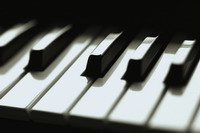Piano Sheets > Diane Warren Sheet Music > Unbreak My Heart (ver. 1) Piano Sheet
Unbreak My Heart (ver. 1) by Diane Warren - Piano Sheets and Free Sheet Music

About the Song
"Un-Break My Heart" is the second single from Toni Braxton's second studio album, Secrets (1996). The ballad was written by music impresario Diane Warren and produced by David Foster. Widely considered to be Braxton's signature song, the song ranked at number ten on The Billboard Hot 100 All-Time Top Songs and number three on the Top Billboard Hot 100 R&B/Hip-Hop Songs. Diane Eve Warren (born September 7, 1956 in Van Nuys, California) is one of the most successful songwriters in the recent history of pop music. As of 2006, her songs have received six Academy Award nominations, four Golden Globe nominations, and seven Grammy Award nominations. She was inducted into the Songwriters Hall of Fame in 2001.
She is as of the end of 2006 the 30th most successful songwriter in UK chart history.. She was the first songwriter in the history of Billboard to have seven hits, all by different artists, on the.
Download this sheet!
About the Artist

Random article
The essentials of piano sheet music Most people have the notion that sheet music is a very complicated notation and reading it very difficult. However, this is not true as understanding sheet music piano is just a matter of transcribing the various musical notes written.
Uses of sheet music
Piano sheet music is nothing but piano notes written in standard notations. You can avail such free sheet music online from various websites. The main use of sheet music piano is to help aspiring musicians recreate the same sequence of notes as performed by the composer of the piece. It is a method where a specific musical composition is recorded in written form using music notes. The ultimate aim of reading sheet music is to recreate the same score in as accurate a manner as is possible.
(More...)
